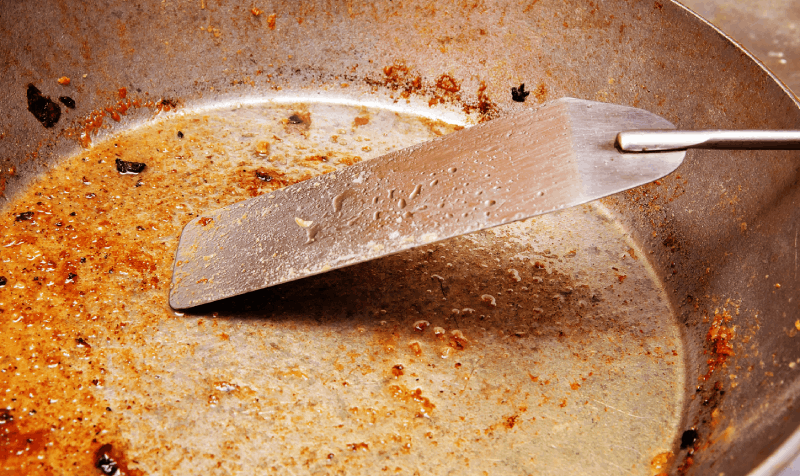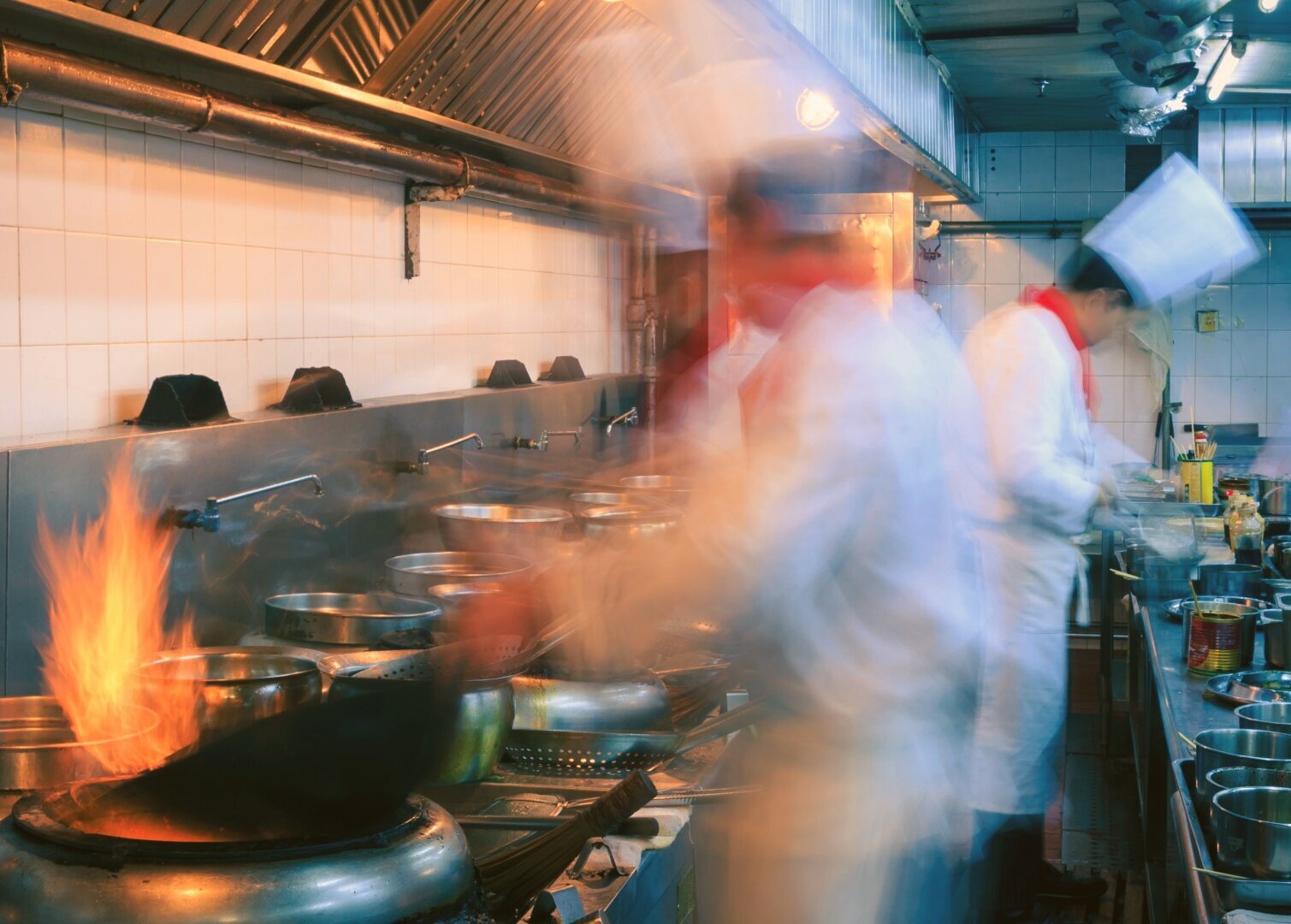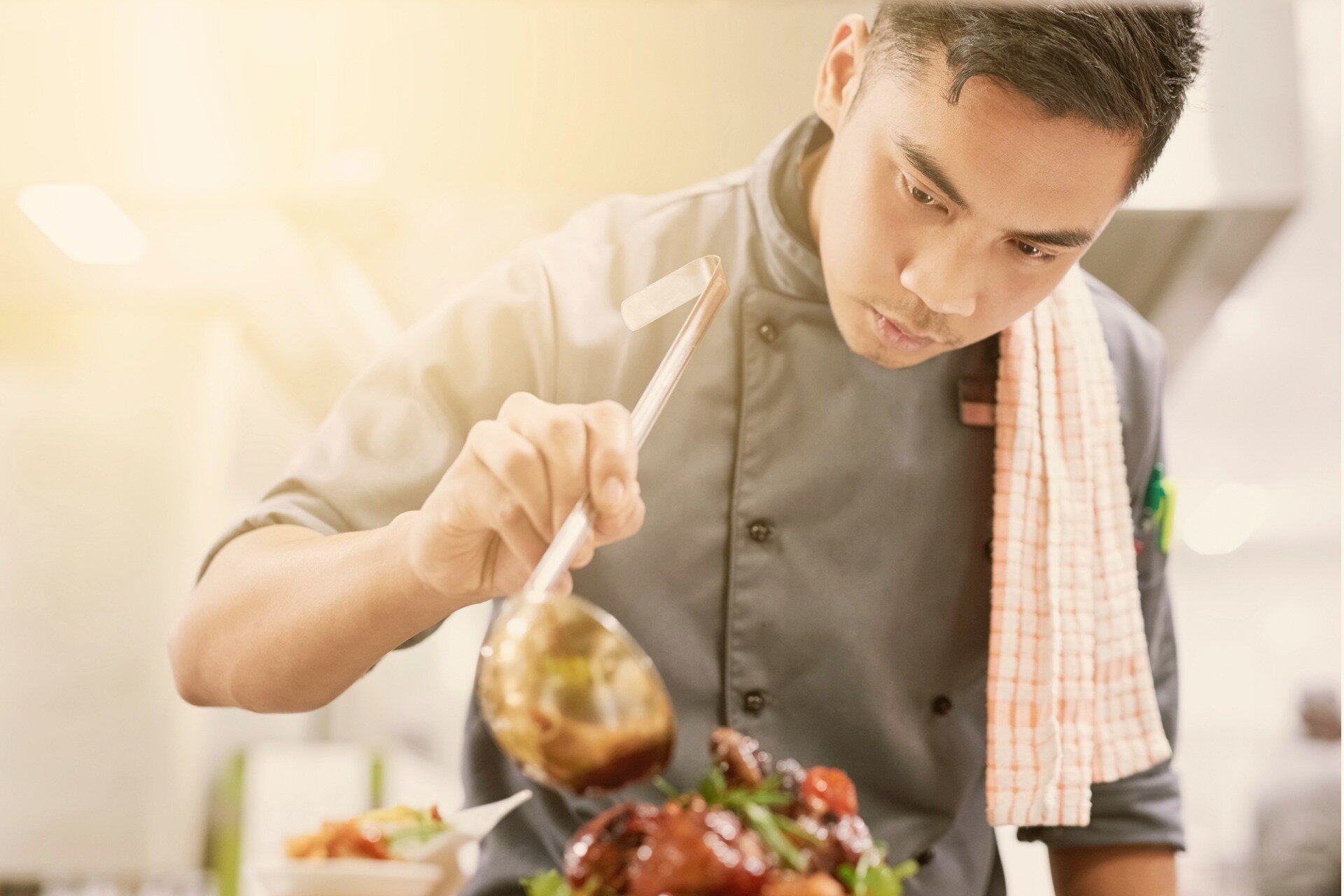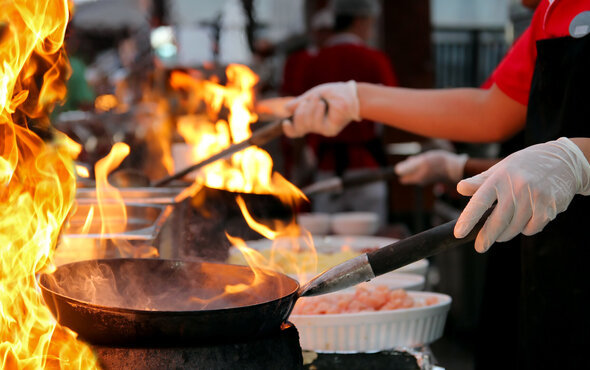
DISHWASHING STAFF VS OIL
In Hong Kong, a restaurant would usually spend USD1400 a month for a dishwashing staff who works 10 hours a day and cleans up to 500 sets of tableware. Including utility cost, detergent, bleach, and employee’s mandatory provident fund (excluding the amount of oil they have to deal with!), a restaurant would spend approximately USD2540 for a dishwashing task. This could be reduced if the restaurant resorts to adopting a centralised dishwashing centre using an efficient dishwashing machine.
THE KITCHEN “NERVES”
Well, there’s also the emotional outbursts apart from the oil. Have you seen chefs screaming at another chef or staff in a typical Asian restaurant kitchen? Truth is, we should all get over the days of “angry chefs”; emotions can be better managed when a kitchen workflow is all figured out.
A lot of commercial kitchens are inefficiently designed — the production area is poorly organised and the floor plan does not consider menu prior to planning. There should be a dedicated area for dishwashing as much as there is an area for storage, food preparation, cooking, baking, and trash storage. Performance and workflow in the kitchen are important — a dishwashing machine ergonomically placed within a dishwashing area can certainly help with that.

HORRORS OF HYGIENE
Only in the last two years, footages of restaurants with hygiene problems have seen a rise in Asia. Bowls that are supposedly cleaned well are seen with food scraps stuck to them together with oil stains. Local restaurants have also gone viral for washing dishes in “unconventional” places (perhaps places that are conventional to rats).
Food courts and catering services are not exempted — there are caterers who have been suspended of their license. The bottom line is, delicious food served in lunch banquets may not always be on safe plates.
WHERE THERE IS A WILL, THERE IS A WAY

The old industry norm of using dishwashing staff may no longer work in today’s competitive and demanding landscape in the Asian F&B world. A person’s first interaction with Asian cuisines in an Asian restaurant sets the benchmark for Asian food experiences, which is where the roles of “clean plates and cups” come in. When the experience becomes non-authentic and fails to meet the fundamental expectations of consumers, the newly inaugurated group of foodies will develop inaccurate perceptions towards Asian restaurants.
The good news is, the ongoing challenge can be wholly overcome with technology — and in the cases above, a professional dishwashing machine. MEIKO’s dishwashing machines for the foodservice industry are designed for all types of foodservice businesses — from star-rated hotels and restaurants to bistros; from specialty lounges to designer bars.
We have seen the worst of the scenarios above, and we can tell you one thing — where there is a will, there is a way!
For more information on MEIKO’s range of dishwashing machines, go here.
Source: Entrepreneur, South China Post, CDO Trends, MEIKO Asia, Harvard Political Review


